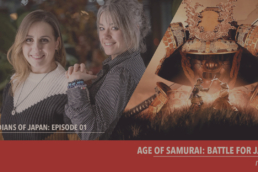Lucky Red Announces the Opening of the Online Store Dedicated to Studio Ghibli
The day that all anime and Japanese culture fans have been waiting for has arrived: we are thrilled to announce the opening of the Lucky Shop, the online store where you can find products inspired by the most beloved films distributed by Lucky Red! And as the cherry on the cake, an entire section of the store will be dedicated to the magical world of Studio Ghibli!
The Magic of Studio Ghibli
Studio Ghibli is one of the most popular and globally celebrated film production companies, founded in 1985 by masters Hayao Miyazaki and Isao Takahata. Since their first feature film, 'Laputa: Castle in the Sky' (1986), they have captured the hearts of young and old alike with their enchanting stories and breathtaking animation.
What makes Studio Ghibli so special? Firstly, the attention to detail and impeccable craftsmanship that characterizes every single frame of their films. Films such as "My Neighbour Totoro", "Spirited Away" and "Princess Mononoke" are not just captivating tales, but true visual masterpieces that wonderfully combine fantasy, nature and humanity.
Their ability to create imaginary worlds inhabited by complex and fascinating characters has made Studio Ghibli a worldwide cultural phenomenon. Who has never dreamed of flying with Totoro, exploring enchanted worlds with Chihiro, or fighting for nature alongside Ashitaka?
The Arrival of the New Lucky Shop Online
And now, the news you've all been waiting for: finally, Studio Ghibli has opened its official online store thanks to Lucky Red! Yes, that's right, you can now bring a piece of the magical Ghibli world directly into your homes.
On Saturday 15 June, Lucky Red announced via its social accounts the opening of the Lucky Shop. From 15 to 22 June, a special promotion will be running: by entering the code LUCKY10 in the appropriate field during purchase, you will receive a 10% discount on all products. The promotion is nominal and each person will only be able to use it once, and will not include shipping costs.

Credits: luckyred.it
An Universe of Magical Products
In the new online store, you will find a wide range of products celebrating the legacy and creativity of Studio Ghibli. One section will be entirely dedicated to official Studio Ghibli products, allowing you to always carry with you the magic of the stories created by Hayao Miyazaki and Isao Takahata imported directly from Japan!
There will be collectable figures of your favourite characters, soft Totoro plush toys, accessories, stationery, and collectables. For true fans, the wonderful Steelbooks have unique illustrations and fine details that turn each piece into a work of art.
The store will also offer special editions of DVDs and Blu-rays, art books and soundtracks that will allow you to immerse yourself even further into the Ghibli universe. And for those who like to dress in style, there will be a selection of exclusive clothing and accessories that will make you feel part of the enchanted world every day.

Credits: luckyred.it
A Unique Shopping Experience
Browsing the new Lucky Shop will be an experience in itself. The site design reflects the beauty and simplicity typical of Studio Ghibli, with sections dedicated to each film and themed collections that will make it easy and fun to find the perfect gift for yourself or another fan of the Ghibli world.
In addition, the store promises to offer international shipping, so that no one is left behind, no matter where you are in the world. Imagine receiving a package that carries some of the magic and wonder of Studio Ghibli, ready to enrich your everyday life!

Credits: luckyred.it
The opening of the Lucky Shop will surely bring a huge “Totoro-like” smile to all fans: your next piece of magic is waiting for you!
Happy shopping!
Your Japan: come to Japan with us
Your Japan is a project born from the minds of Japan Italy Bridge in collaboration with GiraMondo Viaggi Grezzana and Bandai Namco, unique and exclusive trips to Japan. Together with our experts, you will have the opportunity to live a unique experience in city of a thousand colours: Tokyo.


Japan, a land waiting to be discovered
Japan is currently one of the most desired destinations for all Italians (and not just them). Japan Italy Bridge has been working with the Land of the Rising Sun for years and, little by little, we have built this tailor-made project for all enthusiasts and lovers of the Japanese Nation.
Your Japan - come to Japan with us
Your Japan is a project born from the minds of Japan Italy Bridge in collaboration with Giramondo Viaggi Grezzana and Bandai Namco. Together with our experts, you will have the opportunity to live a unique experience in the city of a thousand colours: Tokyo.
One of the largest megacities in the world where modernity coexists with traditional Japan. An almost perfect fusion that allows us to move from the zen atmospheres of the gardens of the Imperial Palace, up to the lively neighborhoods of Shinjuku and Akihabara. And it is precisely in this last area that the horizons open up to all manga and anime lovers. No matter how old you are, here is the right place to find "old" historical video games, or the newest releases on the market. From classic names such as Pac-man to Dragon Ball, passing through famous titles such as Kenshiro, City Hunter, Saint Seiya up to more recent titles such as Tekken.



Our partners
The GiraMondo Viaggi brand was born in the historic center of Verona in 1979 with a single travel agency. Over the years, the brand grew, becoming a group, with many travel agencies, present on the national and international territory.
There are currently around one hundred agencies, with the GiraMondo brand, each with its own shop and unique location in Italy and abroad.
A leader in the global entertainment industry, BANDAI NAMCO Entertainment Europe publishes and distributes video games and entertainment products in Europe, the Middle East, Africa and Asia-Pacific. The company philosophy is "More Fun For Everyone".
The group's mission is to bring "more fun for all" around the world, with the aim of becoming the leaders of innovation in global entertainment.
From their European headquarters in Lyon they work on titles such as Pac-Man, Soulcalibur, Tekken and Dark Souls… as well as new projects such as Little Nightmares, Twin Mirror and The Dark Pictures.
The tour leaders of "Your Japan"
Our package is designed to give you all the attention necessary for you to experience a unique and unforgettable experience. In fact, our Italian staff will assist you for the entire duration of the trip. Our tour leaders will depart from Malpensa with you and will accompany you for the entire duration of your stay, until your return to Italy.


In these 8 days, our staff will take you to discover the Japanese capital, with exclusive experiences and trips out of town to also admire the Momiji, the period of the year in which the change of foliage takes place.
Among Ginko trees, temples and skyscrapers, you will have the opportunity to live an unforgettable and above all all-inclusive experience. Our package was created to give travelers the opportunity to not have to think about anything other than enjoying the beauty of this fantastic land. You will therefore not have to worry about flights, hotels or guided tours because everything is included in the price. Furthermore, for those who book by June 30th, they will also have an additional €100 discount per room.
So, what are you waiting for? It's time to pack your suitcase and travel with us!
Guardians of Japan - Episode 01: "Age of Samurai: Battle for Japan" review
Here we are again with a new web series by Japan Italy Bridge! As you know, we aim to communicate and promote Japanese culture and companies in Italy and vice versa.
Since it is not possible to travel in this period, we have decided to try to shorten the distance between Italy and Japan even more by telling you not only about our experiences but also by sharing what we know about the Land of the Rising Sun.
We have already produced a web series dedicated to the promotion of Japan here in Italy called "Bringing Japan to Italy" and now we start with this new series dedicated to the history of Japan and mainly to those figures that fascinate us Westerners: the Samurai. For those who have been following us for some time, you already know that we have a fairly rich column on this subject on our blog and now we have decided to delve into it all through a video podcast.
So at each episode we are going to analyse the life and adventures of Japan's most important Samurai and we decided to dedicate the first episode to the review of the TV series "Age of Samurai: Battle for Japan" that you can find streaming on Netflix! We had already anticipated the arrival of "Age of Samurai" on Netflix and now after a full immersion we are ready to tell you what it is about, our impressions and also some curiosities!
We hope you enjoy this first episode and we are really curious to receive your feedback. Stay tuned because in the next episodes not only will you be able to discover the true history of Japan, but there will also be many surprises waiting for you, enjoy!
Authors: Erika Panzeri, Angie Antenucci // Japan Italy Bridge
Editing: Erika Panzeri // Japan Italy Bridge
Some of the footage in the video is owned by Netflix, we do not claim property of that footage.
Business Focus: How to approach the Japanese market
Here we are again with the column dedicated to the Business Focus and today we are talking about how to approach the Japanese market. Starting from start-ups up to large companies, very often we tend to forget to approach and target the Japanese public and this is a mistake from the beginning. Why eliminate a slice of the market that represents the third world power in terms of consumers?
How to approach the Japanese market
Autore: Erika
As we mentioned earlier, the Japanese market represents the third largest slice of the world by consumer level. Instead, did you know that social media platforms, even the biggest ones, consider the Japanese market as the second largest market in the world? This is because China, which would occupy the second place, has blocked many foreign companies and corporate policies, causing the focus to shift to Japan.
However, very often companies make the mistake of excluding Japan from their marketing strategies. This is because the Japanese market is also one of the most difficult to approach. In reality, you just need to be able to adapt to their mentality and ways.
The obstacles of the Japanese market

One of the biggest problems that Western companies find when approaching the Japanese market is primarily the language barrier. In fact, the average Japanese customer prefers to use their own language for both private relations and business exchanges. In fact, according to EF, Japan ranks 55th in the chart table in terms of knowledge of English.
If we add to this the fact that Japan is a country that is very attached to tradition and also to its customs and traditions, the approach to this market becomes even more difficult. However, this should not stop us, but rather stimulate us to find a way to reach this market. So, what kind of marketing strategies and tactics could we adopt? How to deal with this situation?
Digital is the solution

The strategy is actually not that complicated, digital and new media are our solution. If we're talking about startups in fact, often the available budget is limited and splitting this on different platforms to have more presence could actually be counterproductive. Better to focus your savings on digital. Over the years of working with Japanese companies and people, we've tried many different ways to promote companies. So here are our tips on where to focus.
Facebook & Instagram ads
In the past, we've already addressed how new digital media, and social media in particular, can help us set our company sailing internationally. In particular, the ads feature of Facebook and Instagram is one of the best tools to target specific users. Both start-ups and established companies should take advantage of this tool to be able to reach their audience.
The two social media platforms obviously have different demographics, with Facebook reaching a more adult audience in Japan and Instagram reaching a younger audience. By combining the two platforms and using them to promote your company, you can reach a wider audience. Obviously, before embarking on a promotional operation, it is important to study your mission and your target audience to be able to reach the right niche audience on the right social.
Twitter ads
One of the most successful social networks in Japan is definitely Twitter. Twitter has more monthly active users (45 million) than any other social media platform such as Instagram (33 million) and even Facebook (26 million) in Japan.
Twitter is a bit of a "controversial" platform, you either love it or hate it. However, when used for business it can become a really powerful and effective media as much as Facebook, especially when it comes to ads. In some cases, depending on the industry, it could even outperform Facebook. Twitter also reaches a very young audience and many Japanese companies have used Twitter ads not only to increase their brand awareness but also to increase their profit organically. If you want to reach the young audience in Japan, Twitter could be the solution for you.
Influencer Marketing
And finally we come here, to Influencer Marketing, what we believe to be the strategy that works best internationally today. In today's world, we are all bombarded by the myriad of advertisements, focusing on influencer partnerships could become a positive thing.
However, influencer marketing can be a double-edged sword. The first step to pay attention to and that will determine the success of a good campaign is the correct choice of the influencer with whom to collaborate. In this case it becomes even more important to be able to find the right influencer who is in line with your image and who has an audience in line with your target.
Obviously, being able to collaborate with big names like Chiara Ferragni or Naomi Watanabe is really difficult, however, there is a category that should not be underestimated: micro-influencers. They have limited followers compared to the others, but they also have a higher engagement rate. These could not only be loyal customers or brand advocates but also be able to bring the audience to your niche.
Investing in marketing is always a great choice and startups that may not have an infinite budget can narrow down their strategy to something targeted and functional. The Japanese market may seem strange but it has the potential to be the springboard for your company. Absolutely not to be ignored.
Business Focus: Content Strategy, everything you need to know before you start
We continue our column on Business Focus talking about Content Strategy. Last time we talked about Native Advertising which is closely related to content marketing. So today, let's go and see what to do before jumping into the fray!
Content Strategy, how to lay the foundation for a solid campaign
Author: Erika
Probably some of you have already heard of Content Marketing, after all it is one of those types of promotion that is going for the most along with Native Advertising. However, a campaign cannot work separately from a more comprehensive and long-lasting strategy.
"Having a precise and structured content strategy is key to creating winning digital campaigns."
This is not only one of our mantras, but it should be that of every company that decides to approach (even for the first time) digital marketing. In fact, there is no content marketing without content strategy, or at least not one that works profitably.
So it's extremely important to study and understand how we can leverage a winning strategy for our business, whatever it may be.
What are Content Marketing and Content Strategy

First of all, let's understand what it actually is.
Content marketing is the creation and distribution of useful and valuable content. All this aimed at a well-defined target audience in order to attract and acquire potential customers and make them take profitable actions.
The content strategy instead deals with the more "theoretical and strategic" aspects. In the strategy we must in fact include all sides related to the planning and management of content throughout its life cycle. This includes not only the creation and publication of the content, but also a careful analysis. In fact, we're talking about a study that involves aligning content with a company's goals, content development, production, measurement and even archiving. This entire phase precedes the implementation of the content itself.
Content strategy is what lies upstream, everything that defines and regulates the practical development process. In fact, the figure of the content strategist does not deal with the production of content, but focuses the attention to the planning of the same. This is the person responsible for deciding not only when content should be published but above all why it should be produced. In fact, each content is a single brick that goes to lay the foundation for the success of the whole communication strategy. It is therefore important to have a well-defined project, studied and that can be analyzed in every step.
Content Strategy: What you need to know before you start
We've said that content strategy is ultimately nothing more than a strategy that envisions a company's business goals and then uses content as the primary means to achieve those goals.
Content can be of various types but one of the important focuses that these have in common is the intelligent use of stories and creative writing, in any form, but we’ll talk more on that in another article.
Content marketing, even in Japan, focuses on a variety of content that can range from a blog post to a confirmation page. The task of these productions is to build a connection of trust between a company's products or services and its target audience. This becomes more fundamental in Japan, where gaining the trust of the customer means everything and has much more weight than in other countries. In fact, as we've mentioned in the past, the Japanese people are basically a traditionalist nation that doesn't like change. In fact, once the target audience trusts and relies on a specific company, they never leave it again.
But this is just the beginning of the Content Strategy concept, so let's take a more specific look at what is involved in a good strategy.
Content strategy: The Vision

When we decide to approach something, if we want this thing to be successful, the fundamental basis is to have a clear vision of what this is all about.
Defining the goals, objectives, what we hope to accomplish and how we hope to accomplish it are the first steps toward writing a good business plan. This starts with a vision of what we want the company to be in three to five years, and then creating an action plan to achieve that vision. This is the foundation of a good strategy.
In addition to making a list of all these things, it is equally important to measure with milestones and goals that are solid enough to challenge ourselves but at the same time flexible and adaptable to any situation. And in this regard, this pandemic has certainly taught us very quickly that everything is mutable and everything can change in a matter of very few days. Hence precisely the importance of having stable and precise goals, but at the same time flexible and adaptable to any occasion. This will allow you to have things well clear and under control, and to start your journey from a stronger position.
This is all part of content strategy. Dealing with the vision, the pros and cons of how and why a piece of content will be created, managed, archived or updated.
At the end of the day, content strategy boils down to writing and planning content with specific goals and objectives in mind. Nothing we're going to share should be disconnected from everything else in the content and business goals. That's really where vision and purpose come into play.
Planning for success

Whatever project you're working on, whether it's personal or for a client, if you want to grow your content it becomes a matter of visibility. Inevitably we will find ourselves fighting for the top spot on google or finding our audience on social. To do this though, it means we need a strategy or otherwise a plan of action.
By now we know what we want to achieve with the content that we are going to create. The correct question to ask ourselves now is "how can we achieve it? In what way?" So let's talk about the method.
Surely the first step is to have an edge over the competition, but we can't all be Chiara Ferragni and be first in the field. So how can we do that? The answer is to have a solid and smart content marketing plan in place.
Getting discovered is one if not THE big ask in recent years and at the root of it all is always interpersonal relationships. Getting our friends and their friends to read and share is the first step toward expanding our audience. This could be the beginning of our strategy.
However, in order for this to work, we need to find the exact target of not only our audience but also our content. To get to this point we need to take a close look at what has already been done and how it is working, so let's talk about analytics.
Here's another important word in all strategies and, more generally, in all work: analysis.
Content review is indeed one of the most important steps in developing our strategy but it's not the strategy itself. Doing a careful review of all the content that has already been shared, even by our competitors, will help us better understand what can work and what can't. Next, we can go deep into analyzing our own content and repurposing it to see what might be more successful.
Thinking strategically really comes down to asking good and right questions at each step of the process.
Give the right purpose to your content

In today's world, where our smartphones and dashboards are crowded (or rather overcrowded) with all kinds of content, it becomes really important to carefully select what we are going to share. Throwing any kind of photo or video into the ether just to create presence no longer makes sense. It's much better to invest time and energy in creating content that has a chance and a clear purpose.
Let's remember that we want our content to be successful, to reach our audience and to make us gain something, be it brand awareness or other kind of profit. So why waste content before it has a chance?
The audience is now used to receiving endless content input and we want to make sure ours succeeds. We want to make sure that our content reaches our audience and leaves a good impression. We already know that Japanese audiences are not easy to impress. So, how can we achieve this? Simple, by planning our content and thinking strategically.
The key is always to have a strategy before creating any content. We should not just push out content for the sake of it, but rather think about its quality as well, and fit it into a specific time frame.
So, before we jump into the content creation fray we need to ask ourselves the right questions. What do we want to achieve? How does this new content fit in with the content we already have or are thinking about planning? What is the big picture of our content?
These are all fundamental questions to answer before we begin our production. Let's not forget that we have a specific purpose, whatever that may be, and that purpose needs to be well defined. For example, are you creating content to increase brand awareness or generate leads? There are many purposes, but the important thing is to be clear about what they are so you can plan the right strategy.
Give your content a purpose and you'll give your audience a reason to read, watch a video, like or re-share. The audience is not a flock of people but a living, intelligent organism, capable of understanding exactly where a piece of content is coming from and why we are publishing it. This is even more valuable with Japanese audiences who are increasingly attentive and selective in their search for content.
If we're creating a piece of content for a reason and planning it in advance as part of our strategy, the audience will notice. Similarly, if we were to do the opposite and throw things out randomly, without a specific strategy behind it, the audience will notice it too.
That's why purpose is so important.
Here’s the bottom line
Creating an effective content strategy that manages to connect with an audience and inspire them to action can seem really complicated. However, as we've come to realize, it's the foundation of any successful marketing campaign. Creating content that has a purpose, that is part of a larger vision and that connects us with our audience is the foundation of any good communication strategy.
It's not always a skill or resource that we find within all companies, which is why there are realities like ours that take care of following this whole part even on behalf of third parties. We take care of creating this model, producing the content and maintaining the work done and then repeating it. Our efforts are put into creating a strategy that will allow your potential audience to discover you. This makes it easier for you to focus on other aspects of your work, or just relax without having to think about it!
The power of social media: TikTok and the Japanese pop star
We continue with our Business Focus column and today we are discussing the TikTok and Miki Matsubara case. Do you already know what we are talking about?
We've said many times before how social media is a powerhouse for businesses and individuals alike, and in this year's pandemic we've had confirmation of that. Even those who did not believe in the digital revolution have now had to change their minds.
How TikTok resurrected a Japanese pop star hit song
Author: Erika
In these months of quarantine and forced isolation, we have seen an increase in creativity on social media. A clear example of this is the rapid rise of TikTok, the favourite social media of young people, which has seen the number of users constantly growing to become the second most downloaded app in 2020.
From pranks to animals to the now famous dance videos, many TikTokers have launched trends that still accompany our days. But today the power of TikTok doesn't just stop with its trends. The case of Miki Matsubara and how a video shared on this social managed to revive one of his hits from 1979 has caused a stir.
In December, users of the platform resurrected the song 'Mayonaka no Door: Stay With Me', which made Matsubara a star in Japan back in 1979. More than 40 years later, the song is still catchy and joyful enough to become the perfect soundtrack to TikTok videos featuring Japanese mothers;
"I did the TikTok when my mum was doing things around the house," one user tells The Japan Times via email. This clip reached more than 1.5 million likes and views in a very short time, propelling "Mayonaka no Door" to the top of Spotify's Global Viral 50 chart for three weeks.
@kickronnie
I’m asking her to sing this next karaoke night 👸🏻 #japan #japanese #おかあさま #fyp
♬ 真夜中のドア/Stay With Me - Miki Matsubara
Unfortunately, Matsubara died in 2004 and was unable to enjoy the revival. However, the song's composer, 71-year-old Tetsuji Hayashi, tells the Japan Times that this new hit "seems very strange... it was so long ago".
Music and social media
.
But is it really that strange? Let's start with the fact that when a song is good, it's still good even after forty years, but let's also think about how much power social media has gained these days. Unfortunately, much of the Japanese music industry still seems to operate as if it were 1979, thus giving little importance to the digital and social media world. The Matsubara case is a case in point.

Singer-songwriter Tetsuji Hayashi says new technologies are rewriting the rules of how a song becomes a hit, "it could be from another country or another generation". It's been a few months now, but the 'Mayonaka no Door' case shows how the interaction between Japanese artists and international listeners has changed over the last few decades. International social media also allows a new generation to fall in love with an artist who might previously have been discarded from playlists simply because of her or his nationality. With the rise of K-pop and the unstoppable BTS, social media sites such as TikTok are also increasingly trending Japanese songs.
The power of TikTok
.

Based on recent statistics, TikTok users spend more than 850 minutes per month on the app, more than 14 hours per month. If we look at the data from October 2019 to March 2020, we can see a significant increase in the amount of time the average user spends on the app, also due to the lockdown.
This social media has spread like wildfire globally, particularly in Asian nations, becoming an entertainment outlet thanks in part to its search based on hashtags. In fact, as of June 2020, the most popular categories on TikTok all have over a billion views. If we go on to count lip-synching and dance videos, we arrive at a total of over 150 billion views.
2020 was marked by lockdowns, and it was during this time that people jumped on new media in search of entertainment and an outlet for their creativity. In fact, TikTok took second place on the list of most downloaded iPhone apps, surpassed only by Zoom for obvious reasons. TikTok even surpassed the downloads of Facebook, Messenger, Gmail, Netflix, YouTube and Instagram, across all app stores, making it the most popular app globally in 2020.
Moreover, in a world like the digital marketing one, we know how important the engagement rate of a social media is. Recent data show that engagement rate varies at different follower levels for Instagram, YouTube and other social media. However, at all follower levels, TikTok has a considerably higher rate than other platforms. In fact, Upfluence analysed that micro-influencers have an engagement rate of 17.96% on TikTok, compared to 3.86% on Instagram and 1.63% on YouTube. While mega-influencers have an engagement rate of 4.96% on TikTok, 1.21% on Instagram and 0.37% on YouTube.
The figures speak for themselves and in 2021 we can only expect a steady rise of this social network and who knows, maybe we can rediscover some other Japanese hits! Do you already have any idea on what the next music trend for TikTokers might be in 2021?
Business Focus: Native Advertising, what it is and its importance, also in Japan
We continue with our Business Focus column and today we are talking about Native Advertising. Have you ever heard of it?
Native Advertising: what it is and its importance, also in Japan
Author: Erika
At a time like this when the whole economy is almost at a standstill, the smartest move is to invest in advertising and marketing. But we know, there is a sea of information and possibilities in this field. However, recently many companies are asking "What is Native Advertising?", let's find out together.
Before we go on to talk about native advertising, we need to take a brief look at the world of online advertising.
The difficulties of online advertising
By now, we are all bombarded with so much information that the advertising market is often saturated. So how do you find and reach your niche audience?
The attention span of online users has been steadily declining for some time now. The average user has an attention span of around 8 seconds. Just think that a goldfish has an attention span of around 9 seconds, which shows how difficult and important it is to hit the user in the first few seconds of viewing.
If we then move on to analyse visibility and the famous CTR, we see that the majority of advertising banners are no longer even displayed, or even clicked on accidentally. In addition, users are also fed up with the exorbitant number of advertisements, very often unwanted. It is precisely here that the various AdBlocks make reaching our target audience even more difficult.
Basically, nobody looks at the banner ads on the various sites anymore. This is where content marketing comes in.

Content Marketing
By now, more or less everyone has heard of content marketing because most online advertising today is done through this form. Many companies, especially those with an international audience, have realised that content and influencers are an excellent (if not the best) marketing tool.
Indeed, branded content is now all the rage on social media and has become a much more effective form of advertising than traditional promotional campaigns.
In a nutshell, this content has a 7 times higher user trust rate than traditional display advertising. They are permanent and can capture visibility and traffic even in the long term. In addition, if we add in a properly done SEO operation, this content has a higher medium to long term ROI.
If we then consider that over 51% of the time spent by users on digital media is spent on a mobile platform, we understand how fundamental it is to have a format that works on these devices.
Mobile and advertising
In a very short time, we have gone from a horizontal 16:9 view to a vertical 16:9 view. Thanks to Stories, Reel and especially smartphones, this format is now one of the most popular formats for all digital advertising campaigns. In fact, our phone screens are already smaller than a computer screen, so why waste precious visual space with display ads, overlays and totally intrusive pop-ups?
It is precisely on these devices that advertising should be designed to optimise screen space and, consequently, the flow of navigation (continuous scrolling, of course). So how do we do it? With Native Advertising of course!

What is Native Advertising
And here we come to the highlight of our article. In essence, Native Advertising is advertising that adapts to the context in which it is placed. For example, they inherit the function of the platform they live on (e.g. Facebook likes). Furthermore, they do not interrupt the user's navigation and are relevant to the viewer. These are characteristics that lead to a greater engagement with this type of advertising.
Basically, nothing new you might say. For years we have already been developing native campaigns such as sponsored posts on various social media, sponsored articles, widgets and so on. However, there are several recognised forms of Native Advertising:
- In-Feed: paid ads placed in an editorial site
- Paid Search: paid ads placed on the results page of a search engine.
- Recommendation widgets: paid advertisements promoting content related to an article.
- Promoted listings: paid advertisements inserted in the product listing of an e-commerce.
- In-Ad: content inserted inside a standard advertising format.
- Custom: special tailor-made initiatives conducted by a brand in collaboration with a publisher, i.e. sponsored articles.
As this is a less overt form of advertising than others, it is important to emphasise when a piece of content has been sponsored or not. Transparency must always be guaranteed.
Creating content that the public loves
We have often had to create content for a Native Advertising strategy, from brands selling Japanese lifestyle products to children's products. However, the main aim is not to sell, but to build the audience for the client.
To do this, it is important to follow several rules because the "sponsored post" cannot be too different from the rest of the content that the chosen platform usually offers. The length, the tone of voice, the language, the font, everything must be in line with the other content. However, it is essential to create a title that is clickable and captures the visitor's attention.
It is very important to be able to capture the user not with numbers and questions, but with a narrative that fascinates him. By now, even the least astute of internet users can tell when someone is trying to sell them a product. Because of this, it is important to differentiate our "sponsored post" by telling personal experiences and creating empathy for example.
The audience has to be involved but above all entertained. Making a person laugh is one of the hardest things to do, but when you succeed, you have captured their attention forever. And so the customer is retained.
Be empathetic but objective, try to help the audience in some way and share your experience. The product does not necessarily have to be mentioned repeatedly, once is enough, also because with the opposite you could risk falling into what in jargon is called "branding" and thus achieve the opposite effect desired by Native Advertising.


Native Advertising in Japan
And here we come to Japan. Despite being a country extremely focused on traditional media and advertising on them, things are changing recently. Due in part to the recent pandemic, the advertising market has seen a significant surge in digital. In fact, Japanese advertisers spent nearly $15 billion on digital in 2021. With the rise of digital media in Japan, companies can no longer ignore the importance of integrating a digital strategy into their overall marketing.
However, fundamentally the Japanese people remain a very traditional people, very tied to history and past experiences. The Japanese people are extremely trust-based, so digital advertising still depends on having a good online reputation. Therefore, SEO and social media operations become key to getting better results in the Japanese market.
One of the keys to a successful campaign in Japan is the use of correct localisation. We can't say it enough, but the Japanese are extremely meticulous when it comes to choosing the right product before making a purchase. Using their language and visuals becomes really important. Writing content that is correct and in line with your target audience is one of the foundations for building a good campaign. Attention to detail and high product quality is the key to winning over Japanese customers.
In conclusion
Native advertisements should resemble any other article on the chosen platform, both in style and function. Be resourceful, truthful and above all remember to entertain your audience.
Business Focus: Why startups should target Japanese customers
Have you ever wondered why startups in the global market don't target the Japanese market? Maybe for the same reason Japanese startups are afraid to enter the global market?
Why startups should target Japanese customers
Author: SaiKaiAngel

First of all, one thing that should definitely not be underestimated is the language barrier. The Japanese in general, are not very keen on learning other universal languages, such as English this could be a pretty big limitation. On the other hand, Japan is a very conservative society and jealous of its culture and tradition. On the other hand, in the rest of the world, the Japanese language is not among the first to be learned. This is one of the first reasons why young start-ups choose English-speaking countries and other Asian countries that are growing at a very fast pace.
Unique customs and business cultures
Every country has unique customs and cultures, but I think the situation in Japan is more intense and explicit than in any other foreign country. Adventure in Japan is definitely not to be underestimated!
Let's take some practical examples. If you want to promote your product or service in Japan, it might be difficult to do so without the support of an agency that can have a lot of influence on the market, especially if you provide technology media services for marketing. Even giants like Google and Facebook have hired local employees to support their agencies!
Some say that the Japanese love brands. In fact, I am of the opinion that the Japanese place great weight on a past reputation of trust before buying or subscribing to something. Considering these points, startups in foreign countries need a sophisticated strategy and marketing, and above all a trustworthy name.

photo credits: fiercebiotech.com
The standard strategy is to partner with a local company in Japan.
Of course, the local company should be familiar with the Japanese market and the language itself. By the way, Japanese people love the "made in Japan" brand, so they are willing to buy appliances in the shop that are not Samsung and LG, but Japanese brands such as Sony and Panasonic, even if they are obviously of lower quality and higher price.
This is not necessarily a bad thing in Japan, on the contrary! A company that wants to make a name for itself in Japan, should target the Japanese market from the start, so that it becomes better known.
Let's take a look at the reasons why startups should target the Japanese market while taking some risks.
Market size
We are talking about a huge size, because the size of the Japanese market is the third largest in the world, so a huge potential for startups.
China has the second largest market, but let's not forget that the Chinese Communist Party has run the entire nation and this has put a crackdown on foreign companies because they want to control every piece of information. While some American companies like Apple and Starbucks have been working in the Chinese market, Google and Facebook have practically not started working there yet. Considering this, it might be difficult or impossible to find your way into the Chinese market. So, taking out China, Japan becomes practically the second largest market after the US.
Excessive concentration in Tokyo
If you are a B2B company, you have to physically visit your potential customers because the Japanese prefer to conduct business in person. Tokyo, the capital of Japan, is a convenient and fascinating city for companies because almost all the offices are located in the Tokyo metropolitan area. If you can conquer Tokyo, you can practically enter the Japanese market with ease. Fortunately, there are many co-working spaces, such as WeWork, in Tokyo and many global startups have taken advantage of them.
High loyalty
As explained earlier, many Japanese people attach themselves to a brand. In other words, if you can work hard and gain the trust of new customers, the Japanese could be the most loyal customers for your brand.
According to Shopify's State of Commerce report, Japanese users tend to repeatedly purchase items if the merchant has a good relationship with them. These statistics show how loyal and critical Japanese customers are to a business.
I want to conclude by saying that it is very important to try to enter the Japanese market, because all companies would need to have their own principles of brand loyalty and attachment. If all companies were able to do this, they would certainly be able to have a more loyal and constant audience over time and thus stay on the wave more. It is important to understand and appreciate the customs and traditions of a place before targeting its brand, it is important to create trust with one's customers.
All this is what the Japanese believe in and what any global company should learn to do. Never lose sight of the Japanese market, because it is the one that will give you the satisfaction you need. Maybe some barriers exist, but the market is worth it with its size, focus and loyalty.
A startup has to be constant, loyal, and a good connoisseur of the habits and customs of the people it is addressing. It is not difficult to create a good branding in Japan, as soon as you have managed to overcome the language barrier, you just need to have this kind of strength and don't forget that we are talking about, practically, the second largest market in the world after the United States.














